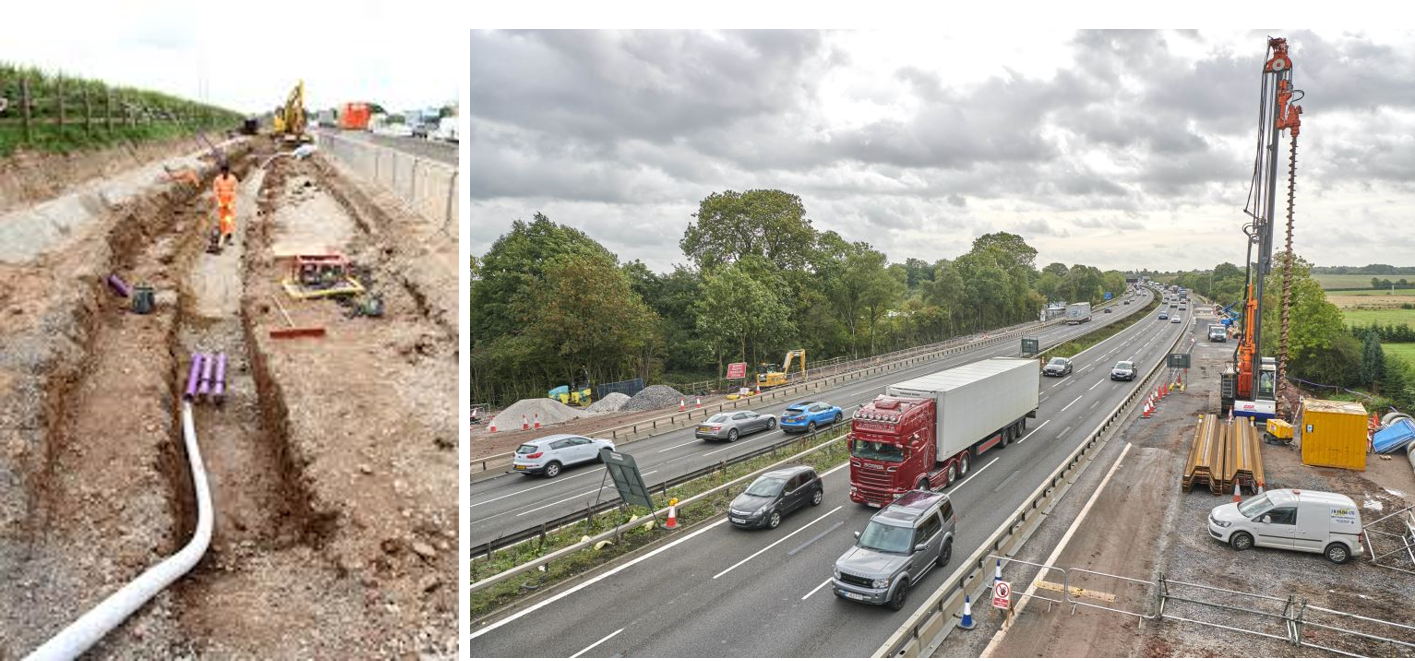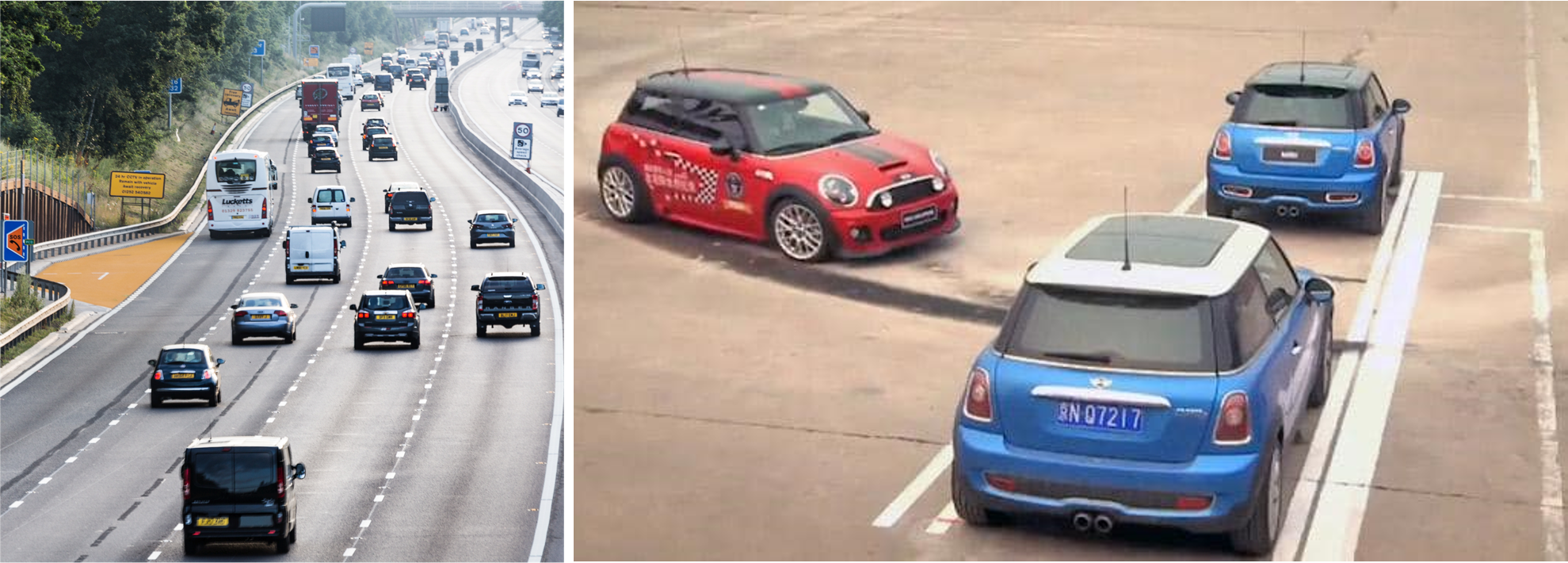
For the last thirteen months I’e been forced to add an hour’s worth of contingency to my journeys to Heathrow thanks to the UK Government’s programme to turn a 32 mile stretch of dumb M4 motorway into a shiny new smart motorway.
The UK has a traffic problem. I get that. More cars, same infrastructure, no money equals more queues. Except that the M4 smart motorway scheme is scheduled to cost £848M by the time they finish next year. So there is money. And, by the looks of the equally disruptive smart motorway projects elsewhere in the country, several billion pounds worth. The only problem then is just how pathetic the whole thing is.
Because, rest assured, anyone with the slightest bit of common sense, when you see what the smart motorway actually consists of, will realise it is a really, really dumb solution. The stupidity goes something like this. When motorways like the M4 were built, cars weren’t as reliable as they are today, so in addition to the three lanes of motorway, there was another ‘hard-shoulder’ lane built next to the inside lane. The idea being that, if you broke down, you pulled off the road, onto the hard shoulder, got out of your car and waited for rescue to arrive. Now cars have become more reliable, someone has made the decision to turn the hard shoulders into a fourth lane. Bingo. Another 33% capacity added to the motorway network. Or, that’s the way it looks until you start actually thinking about it.
Not that anybody apparently did. A bit like the German newspaper Brexit-related headline from the other week, the UK version of a smart motorway is ‘Der große Clusterfuck’. Three things in particular should have rung alarm bells:
1) Hard-shoulders weren’t universally provided (e.g. adjacent to bridges), so turning hard-shoulders into fourth lanes can often mean, where there was no hard-shoulder in the first place, the four-lane motorway periodically shrinks to become a three-lane motorway. So a three-lane motorway with no bottlenecks now becomes a four-lane motorway with multiple bottlenecks. Which in effect means that the traffic is effectively still constrained to flow the same amount of traffic as the original three-lane road. Except now with added stop-start blockages.
2) In order to allow broken-down cars to find refuge, every two miles or so, a short ‘emergency refuge area’ has been built. This is in effect a new fifth lane. Except it is about six car lengths long. I’ve never tried to decelerate my car from 70mph to zero over emergency-stop like distances to get into one of these areas so far, but I imagine the skill required to do so is akin to that used by stunt drivers performing the trick of driving towards a parallel parking space between two cars at 90degrees, slamming on the handbrake and spinning into the parking space. Surprise, surprise, those poor unfortunate souls that have had to make use of the emergency refuge areas have frequently found themselves not just broken down, but also crashed into. That is, provided there wasn’t someone already parked up in the Refuge area for a comfort break. Or because they felt sleepy. Or had an incoming call to take. All of which, according to a recent survey, is what 83% of users are using them for. Net result: the Government has now had to embark on a national TV advertising campaign to tell people what they can and can’t use the Emergency Refuge Areas for. And so another £10M gets flushed away.

3) Finally, and worst of all, is the ‘smart’ part of the smart motorway system. In order to compensate for the potential problem of broken down cars struggling to get into the Emergency Refuge Areas, there is a system of sensors built into the roads and a host of overhead signs to actively vary the speed limit. This is the part of the debacle that’s responsible for a big part of the £848M. Digging up the roads to lay miles and miles of sensor cable is utterly dumb.
It’s dumb because all the information required to tell vehicles to slow down if there’s a problem ahead is already available. For free. In the ether. On everyone’s mobile phone or satnav signal. As the TRIZ trend tells us, mechanical solutions always evolve to ‘field’ based solutions. You don’t need cables when the field-based signal is already there. You don’t need to dig the roads up. And you don’t need to keep digging the roads up when the cables start failing. As cables and their connectors are apt to do. There’s nothing magic about this evolution trend. Except, of course, as far as the construction companies are concerned, they wouldn’t get to charge £848M any more. And they lose all of the maintenance charges they’ll no doubt accrue over the course of the next twenty years. Another few billion dollars down the drain. And twenty years during which British drivers will be stuck with a ‘smart’ system that was outdated before it was even commissioned.
Yes, but, I hear the construction companies say, mechanical sensors are more accurate than the wifi signals. What happens when the wifi is down? They have a point. The ‘field’ based solution isn’t as accurate today as the mechanical sensor system will be. But by next year it will be. And it will give a whole bunch of side benefits that the mechanical system will never be able to reproduce. How do we know this?
Answer because, when we go look at Alibaba’s ‘City Brain 2.0’ smart motorway solution for big cities in China that’s precisely what it does. But not just 32 miles of one motorway. No. Because it is cloud-based, it automatically covers every road. None of which need to be dug up. If I was a betting man, I’d be willing to bet that the UK Government could have made a City Brain 2.0 solution covering the whole of the Union for a fifth of the price of the stupid 32 mile stretch of wire and duct tape bollocks on the M4. Think about that, politicians and construction company managers as you spend an hour sitting in stationary traffic, late for your next Heathrow flight to Idiotsville.
